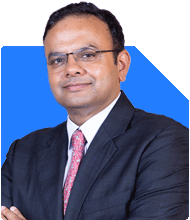5000 investment and earn 500000 in 3 year Age 45 y
Ans: Investing Rs 5,000 and expecting to grow it to Rs 5,00,000 in three years is highly ambitious. At the age of 45, it is important to balance your financial aspirations with realistic expectations. While the desire for rapid wealth creation is understandable, it is crucial to approach your investments with caution.
Avoiding Get-Rich-Quick Schemes
Get-rich-quick schemes are often tempting, but they can lead to significant financial losses. These schemes promise extraordinary returns in a short period but often fail to deliver. Instead, they increase the risk of losing your principal investment. It’s important to recognize that there are no shortcuts to wealth creation. Sustainable wealth is built over time through disciplined and well-informed investment decisions.
Risks of High-Yield Schemes: These schemes often lack transparency and may involve unregulated markets. The high returns promised are usually unsustainable and come with hidden risks.
Stick to Regulated Investments: Focus on investments that are regulated by reputable authorities. Regulated investments offer better protection and are less likely to result in financial loss.
Understanding the Required Growth Rate
To achieve your goal, the investment needs to grow at an extraordinary rate, which is rare and risky. Such high returns require a deep understanding of the risks and market dynamics. Given this, it's important to reassess your expectations and explore more realistic investment strategies.
High-Risk Investments: Potential and Pitfalls
Achieving such high returns in a short period typically involves high-risk investments. However, these investments carry a significant risk of loss.
Equity Investments: Small-cap and mid-cap stocks can provide higher returns but come with higher volatility. It’s essential to understand that while the potential for growth is there, the risk of loss is equally high.
Speculative Assets: Investments in speculative assets, such as cryptocurrencies, can also offer rapid growth. However, their unpredictable nature makes them extremely risky and unsuitable for most investors.
Startups or Private Equity: While investing in startups or private equity can sometimes yield high returns, these markets are highly uncertain. The likelihood of losing your investment is substantial if the venture fails.
Importance of Diversification
Even when targeting high returns, diversification is key to managing risk. Concentrating your entire investment in one high-risk asset is dangerous. Diversification spreads your risk across different asset classes, reducing the impact of a poor-performing investment.
Balanced Portfolio: A balanced portfolio with a mix of high-risk and stable assets helps in managing potential losses while still aiming for growth.
Regular Monitoring: High-risk investments require close monitoring. Regular portfolio reviews allow you to make timely adjustments and reduce risk exposure.
Active Management vs Index Funds
In your pursuit of higher returns, active management plays a crucial role. Actively managed funds offer a better chance of outperforming the market compared to index funds, which are generally unsuitable for achieving such high return goals.
Disadvantages of Index Funds: Index funds simply track the market, offering average returns. They are low-cost but do not provide the kind of growth you are targeting.
Benefits of Active Management: Actively managed funds can leverage the expertise of professional fund managers to outperform the market. These funds are more suited for aggressive growth strategies.
Regular Funds vs Direct Funds
Choosing between regular and direct funds is another important decision. Regular funds offer the benefit of professional guidance, which is essential when aiming for high returns.
Disadvantages of Direct Funds: Managing direct funds requires a high level of knowledge and time. Without professional advice, the chances of making costly mistakes are higher.
Benefits of Regular Funds: Regular funds, managed through an MFD with CFP credentials, provide access to expert advice. This guidance can help you navigate complex markets and make informed investment decisions.
Assessing Your Risk Tolerance
At 45, it is crucial to assess your risk tolerance. High returns come with high risks, and it's important to consider whether you can afford to take such risks at this stage of your life.
Financial Stability: Ensure your basic financial needs are met before investing in high-risk assets. Your principal should only be invested in such assets if it is surplus to your immediate financial needs.
Time Horizon: A three-year time frame is relatively short. High-risk investments in such a short period can be highly volatile. You need to be prepared for the possibility that your investment may not grow as expected.
Exploring Alternative Strategies
Given the high risk associated with your goal, consider alternative strategies that are more realistic and sustainable.
Systematic Investment Plans (SIPs): SIPs offer a disciplined way to invest in equity markets. While they may not yield the same returns as high-risk investments in three years, they are a safer and more reliable way to grow your wealth over time.
High-Growth Mutual Funds: Some mutual funds focus on high-growth sectors and can provide better returns than average funds. However, they still carry risks, and it’s important to manage your expectations.
Compounding Over a Longer Period: Consider extending your investment horizon. A longer investment period allows compounding to work more effectively, reducing the need for excessively high annual returns.
Professional Guidance is Key
Given the complexity of your goal, professional guidance from a Certified Financial Planner (CFP) is essential. A CFP can help you craft a strategy that aligns with your financial goals and risk tolerance.
Tailored Strategy: A CFP will assess your financial situation and recommend a strategy that suits your needs. This advice can help you avoid risky schemes and focus on sustainable wealth creation.
Ongoing Support: Working with a CFP provides ongoing support, ensuring that your investment strategy remains aligned with your goals as market conditions change.
Finally
Pursuing an investment goal of turning Rs 5,000 into Rs 5,00,000 in three years is ambitious and involves significant risk. While the allure of high returns is strong, it’s important to avoid get-rich-quick schemes that promise unrealistic returns. These schemes are often shortcuts to financial loss.
Balanced Approach: Focus on a balanced investment strategy that prioritizes safety and realistic growth. High returns are possible, but they require careful planning and professional guidance.
Realistic Expectations: Set realistic expectations and be prepared for the possibility that your goal may need more time to achieve. Wealth creation is a long-term process that cannot be rushed.
Stay Disciplined: Investing requires discipline, patience, and continuous learning. Stay informed about market trends, and don’t hesitate to adjust your strategy as needed.
Best Regards,
K. Ramalingam, MBA, CFP,
Chief Financial Planner,
www.holisticinvestment.in



























